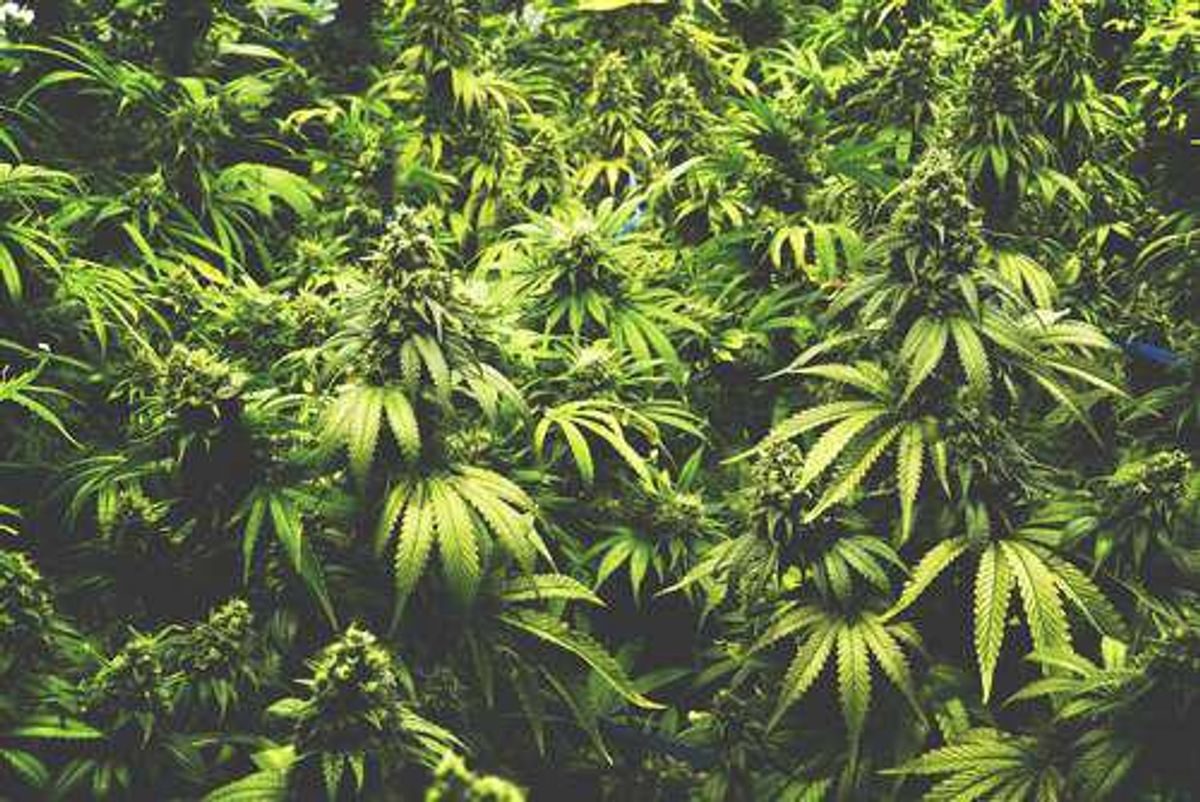How Cannabis Strains and Cultivation Techniques Influence Crop Yield

In lieu of canopy space, cannabis companies have begun to focus on cannabis crop yield as a more accurate performance indicator.
Crop yield is a useful metric when measuring the scale and success of a cannabis cultivation operation.
Cannabis companies with large-scale greenhouses love to talk about the size of their operations, however, recently cannabis companies have begun to focus on measuring cannabis crop yield as a more important performance indicator. Grow space numbers are often impressive and easy to understand, but they don’t necessarily tell the full story. Major cannabis cultivation facilities are often economies of scale that prioritize quantity over quality, resulting in a standardized end product that can be produced at large volumes.
In Canada, demand for high-quality cannabis has created an opportunity for craft cannabis producers that specialize in offering cannabis products grown in small batches in order to ensure the greatest quality. These operations often focus on unique strains capable of producing unique effects and can require extra attention when compared to large-scale cannabis production operations. For craft cannabis companies that have embraced a smaller operational footprint, yield can be a critical metric when analyzing how efficiently the company is utilizing its cultivation space.
Artificial selection and cannabis production variables
In order to grow a premium cannabis product, cultivators aim to design and implement efficient systems capable of controlling every possible input. For cultivators, there are a number of variables at play that can greatly influence the quality of the resulting product, beginning with the strain selected. Cannabis strains all contain the genetics of their “parent” plant. These genetic properties are passed down from generation to generation, enabling cultivators to select and reproduce the plants that produce the optimal traits for each desired use. This process is referred to as artificial selection and has been commonplace in farming for centuries.
Once a strain is selected for production, there are a number of factors during the cultivation process that can influence the yield and quality of the resulting product. Facility design, lighting, irrigation, air quality and soil quality can all play a significant role in the resulting plant depending on the properties of the strain being grown. Due to the unique properties of cannabis strains commonly grown around the world, the growing conditions must be adapted to the preferences of the strain being grown. Each strain can respond differently to environmental inputs, leaving growers to fine-tune their operations based on the desired result. For example, according to Leafly strains such as Hash Plant and Critical Kush are known to grow into smaller plants, while strains like OG Kush and many “OG” varieties require specific nutrients with a higher quality of calcium and magnesium in order to return the best quality flower.
To many in the cannabis industry, the size and setup of a cultivation facility can have a major impact on the quality of cannabis grown there. The larger the grow space, the harder these inputs are to control, and the harder it is to keep the facility clean of pests and pathogens. According to Flowr CEO Vinny Tolia, the decision to optimize cultivation is a key aspect of the company’s business strategy. “Our entire thesis is based on maximizing yield and thereby reducing the marginal costs of production using purpose-built, highly efficient and extremely clean indoor growing facilities,” Toila told INN in 2019. Flowr is one of Canada’s leaders in cannabis crop yield according to Sean Williams of Nasdaq.com.
Cannabis companies optimizing crop yield
There are a number of cannabis companies taking different approaches to optimize quality and yield, with licensed producers and researchers coming together to improve the overall potential of the industry. Upstream at the strain selection level, Canadian cannabis company PacRoots Cannabis (CSE:PACR) has formed a strategic partnership with cannabis breeder Phenome One to give PacRoots access to some of the world’s best cannabis genetics. Phenome One holds the licenses to over 350 strains with varying remedial benefits, making it one of the largest genetic cannabis libraries in Canada.
“By filtering through as many as 600 plants in order to derive a specific phenotype, Phenome One allows us to tailor elite cultivars that can be designed for both indoor and outdoor cultivation,” said PacRoots CEO Patrick Elliott. “Cultivators demand the efficiency to produce better yields and products for the end-user while maintaining product integrity and potency. Suitable genetics, articular process, and data collection to optimize yield for specific climates are essential to compete in this new global cannabis industry.”
At the cultivation level, innovative tech companies including SunPath are working to improve the capabilities of the cannabis industry through its patented collection of fiber optic technologies that are capable of delivering 10 times the energy of traditional PV solar panels that drive LEDs. The company believes improving the artificial light used to grow cannabis plants has the potential to reduce operating costs while improving plant growth.
Takeaway
The cannabis supply chain offers a number of opportunities for innovative companies to optimize conditions in order to deliver the best possible product. For traditional cannabis cultivators, there are a number of critical factors that inform the cultivation process, from upstream influences such as the strain and its genetics to downstream influences such as growing conditions, fertilizer, and water quality.
This INNSpired article is sponsored by PacRoots Cannabis (CSE:PACR). This INNSpired article provides information that was sourced by the Investing News Network (INN) and approved by PacRoots Cannabis in order to help investors learn more about the company. PacRoots Cannabis is a client of INN. The company’s campaign fees pay for INN to create and update this INNSpired article.
This INNSpired article was written according to INN editorial standards to educate investors.
INN does not provide investment advice and the information on this profile should not be considered a recommendation to buy or sell any security. INN does not endorse or recommend the business, products, services, or securities of any company profiled.
The information contained here is for information purposes only and is not to be construed as an offer or solicitation for the sale or purchase of securities. Readers should conduct their own research for all information publicly available concerning the company. Prior to making any investment decision, it is recommended that readers consult directly with PacRoots Cannabis and seek advice from a qualified investment advisor.





